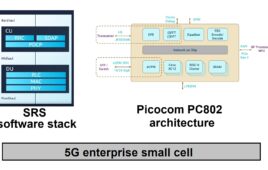5G has long been heralded as the future of wireless networks, but getting there is still a work in progress. And the need for the new technology, which will allows networks to handle exponentially more traffic, is only becoming more urgent.
With the explosion of IoT and new smartphone markets, the number of connected devices is expected to hit more than 50 billion by 2020 with mobile data traffic alone accounting for 197,000 petabytes.
To help facilitate the transition to 5G, Nokia Networks and National Instruments (NI) teamed up on the Millimeterwave (mmWave) challenge and recently brought to fruition the first field-deployed 5G proof-of-concept system. According to details provided in the case study release following the prototype testing, Nokia’s solution was able to demonstrate “one of the first mmWave communication links capable of streaming data at 10 GB/s.”
According to NI Director of RF Communications and Software Defined Radio James Kimery, Nokia first approached NI with the concept in 2012, reaching out to the tools provider for help shortening the design time from concept to prototype.
“Back in 2012 when we started this, (millimeterwave) was an aggressive concept,” Kimery said. “They were one of the first, I think, companies that was looking at millimeterwave as a possible technology for 5G. They came to NI because they specifically wanted to focus on shortening their design time, because in 5G the companies that can demonstrate the technology sooner rather than later have an advantage in the market.”
According to Kimery, NI’s team stepped up to the challenge by providing Nokia with access to its LabVIEW Communications software, a graphical programming language with a massive algorithm database that integrates hardware and software seamlessly while allowing multiple types of engineers to work on the same platform.
“Because (LabVIEW) is a common platform, all of these engineers with different expertise can all speak the same language,” Kimery explained. “If they’re all speaking the same language it really does expedite the time. So the first prototype was built in 12-14 months, but if Nokia had used a traditional approach it probably would have taken them twice as long and twice as much money.”
Now that a working model has been built, Kimery said he and his team are looking forward to working further with Nokia and continuing at the forefront of progress as 5G marches forward.
“I’m sure their initial work will be refined as other people get involved to make sure that the technology meets the requirements in the market, but now they have a technical contribution they can definitely share,” Kimery said of Nokia’s project. “There are still many unknowns with millimeterwave, but our intent is to continue to be on the front lines.”



